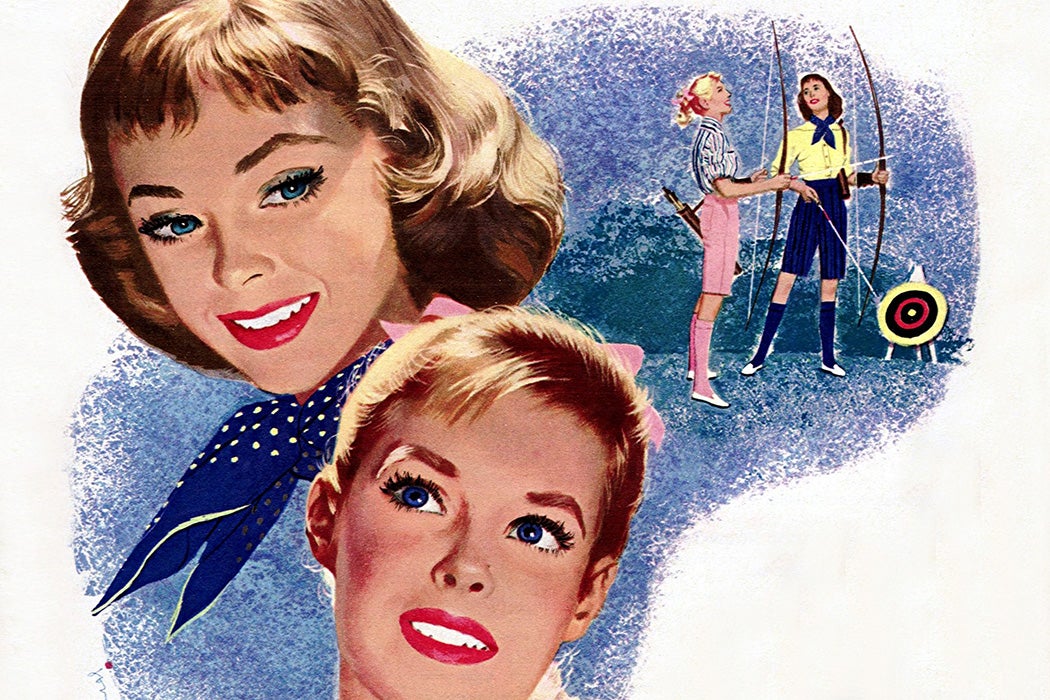In many states, bow hunting season is approaching or already here, bringing images of manly hunters as well as invitations to women to join the “traditionally male” sport. But, as historian Eric Mogren writes, women’s participation is not a new feminist development. Women were part of US bow hunting culture from the beginning.
Mogren writes that nineteenth-century Americans organized their ideas about hunting less by gender than by class. Elites distinguished their enjoyment of sport hunting from subsistence hunting or blood sports practiced by the masses. Part of this distinction was elite women’s participation, which lent a sense of civility to upper-class hunting trips. But this began to change in the early twentieth century as hunting became understood as a democratized but masculine sport.
Bow hunting was different, however. While the bow and arrow is, of course, a very old tool, Mogren notes that bow hunting only became popular with white Americans in the twentieth century. This was thanks in part to Ishi, the last surviving member of the local Yahi branch of the Yana-speaking people of northern California. In 1911, anthropologist T. T. Waterman “rescued” Ishi from jail and put him on display as a living exhibit at the University of California’s Museum of Anthropology. Ishi subsequently taught bow and arrow making to a professor and author named Saxton Pope, who wrote a series of popular books and articles that won many new enthusiasts to the practice.
The growing community of bow hunters valued the challenge of getting close enough to their prey to make a clean kill. But detractors warned that the “primitive” hunting method would cruelly wound animals and waste game. Legislators and wildlife authorities often agreed with the critics, creating barriers to bow hunting.
In the 1920s and ‘30s, newly created archery and bow hunting magazines advocated for the legitimacy of the sport. And, like Victorian sport hunting advocates, they used women’s participation as a way to demonstrate its civilized status, featuring stories about successful women hunters and bow-makers. In an article published in Ye Sylvan Archer in 1927, for example, “Miss Billie” kills a deer while her husband fails to bag one of his own. Miss Billie is also shown as possessing woodland skills and strength in paddling equal to the men in her party. Another woman, a French Acadian named Annie Edwards, acts as the group’s guide while her husband remains at the hunting camp to prepare dinner.
In the postwar period, bow hunting magazines continued to feature men and women hunting together, sometimes with their kids. In a 1956 issue of Michigan Bowman, one woman writer playfully described a trip in which she and her eleven-year-old son each kill a deer, while her husband must “face the razzing he knew he was to get having his wife and son show him up.” Bow hunting magazine covers from this era also often featured photos of women hunters in action.
“Bow hunters were a heterosocial recreational community that encouraged women to be feminine hunters and celebrated their hunting success free from the masculine hunting discourse that marked other outdoor journals,” Mogren concludes.
Support JSTOR Daily! Join our new membership program on Patreon today.







